Introduction
The Queen discography in Portugal includes not less than 27 different records in the 7” vinyl format. And at least 2 records from Angola must be added to this list, therefore the variety is quite complex especially regarding the years between 1973 and 1980, when unique picture sleeve covers were published in these countries only. The Angola editions were pressed until 1975, year in which the country gained the independence from Portugal. Not all the singles from Queen discography have been published in Portugal, but for all the known editions a short description will focus on the picture sleeve details giving the details of each edition, including the catalogue number. Track list in Portuguese and Angolan editions are always identical to the UK pressing.
In the first part of Queen discography, it must be remarked that each country used to have and releases a unique picture sleeve edition for the songs that were intended to be published as singles; so a lot of different picture sleeves (each with its own different layout) can be found for a single song. All Queen singles in Portugal have been published under EMI label as it happened in UK.
Another detail that can be tracked is the evolution of the Queen logo during the years: the different variations appear in the picture sleeves and they help to identify immediately the exact period of the discography analysed; the look and the style of the members go in the same direction.
Some of these items are really difficult to find nowadays, so they are very sought after by worldwide collectors. Especially the singles from Portugal and Angola, due to the fact they had – at least in the first years – unique picture sleeves and that they were pressed in very small quantities.
Therefore, this analysis will focus on the 7” format, showing the peculiarity of each edition and showing them in chronological order. For each Portuguese or Angolan pressing, the picture sleeve will be compared to the standard UK edition in order to underline differences and similarities, and this will show why the Portuguese market is so important in an iconographic point of view.
The analysis of the 7” picture sleeves
The first Queen single ever published, Keep Yourself Alive, is one of the rarest Portuguese picture sleeves (Figure 1) and its peculiarity is given by the fact that it has a photographic picture sleeve, whilst the original UK edition (Figure 2) was published in a standard EMI red sleeve. That happened because it was the band first release, but the Portuguese offices decided anyway to give the new artist a great opportunity using a picture taken at Freddie Mercury’s flat in London.


Again, for the Seven Seas Of Rhye single, Portugal used a picture sleeve (Figure 3) and the UK edition used a standard EMI sleeve (Figure 4). The picture used in this case was taken from the inner sleeve of the LP “QUEEN II”, album in which the song originally appeared. The first edition of the Queen logo is here printed in a big format and it already shows its regality and pompousness.


The Angolan edition for this single has the same sleeve of the Portuguese edition: only the back is different for the details regarding the factory where the single was actually pressed.
The single Killer Queen, taken from the LP “SHEER HEART ATTACK”, was published in several countries of the world. In UK the original edition was again a standard red EMI sleeve (Figure 6), whilst in Portugal the same picture of the first single Keep Yourself Alive was used but with a “cut and copy” graphic montage in order to make it look different from the original artwork (Figure 5). In order to promote the single on the front sleeve it is stated that the song was in the first position in the charts in London, and this means that the Portuguese edition was printed later than the UK one.


Again, the Angolan edition had the same sleeve of the Portuguese edition, and in the back, there were minor differences. Both editions share the same catalogue number as it always happens in Angola.
The picture sleeve for Now I’m Here (Figure 7) features a monochromatic picture taken during a live show and it is one of the best single cover from Portugal thanks to this peculiarity, since picture was unpublished. The standard UK edition is very simple and without a picture sleeve (Figure 8).


With Bohemian Rhapsody even in UK the record company decided to use a picture sleeve for the first time in Queen discography (Figure 10), and the inspiration was a studio picture. In Portugal the choice was more ambitious, since a caricature was used to promote the single (Figure 9).


For the following single Somebody To Love, published in 1976, in Portugal the picture sleeve (Figure 11) used the same picture of some years before for Seven Seas Of Rhye but this time in full colours and adding some writings for the title and the group name, using a unique and unpublished logo. The UK single sleeve (Figure 12) is totally different, since we have this time a caricature and the name of the group doesn’t even appear at least in this edition, whereas other countries have it.


From the single Queen’s first E.P. on published in 1977 (Figure 14), UK and Portuguese edition are almost identical and differ only for some tiny details, especially writings added in the Portuguese edition (Figure 13). Queen’s first E.P. is one of these early examples, in which the Portuguese edition adds to the original layout (a picture taken during a live show) the albums from which the songs are taken, and a big stamp to commemorate the 100 years since the phonograph was invented.


The same rule is then applied again in the We Are The Champions single: the robot taken from the cover of the LP “NEWS OF THE WORLD” is inspired from the standard UK edition (Figure 16) and the details of the album are added (Figure 15). The original drawings for the LP and the single are from the American artist Frank Kelly Freas and they were first used in a comic book from 1953 (Astounding Science Fiction): Queen found this kind of graphic very interesting and so they contacted the artist to redraw and adapt the science fiction subject for their album.


The crowd escaping from the robot is the theme chosen for the picture sleeve of Spread Your Wings from 1977: the image appears in the inner sleeve of the “NEWS OF THE WORLD” LP. For the very first time the UK (Figure 18) and Portuguese (Figure 17) editions are identical in every detail.


The following single, Bicycle Race, published in 1978, has a picture with a girl riding a bike on the cover and this image recalls songs’ titles of both sides od the vinyl edition. The pants on the girl’s image are added on the sleeve layout since she was originally naked, and this would have created some censorship problems. The editions for UK (Figure 20) and Portugal (Figure 19) markets are identical.
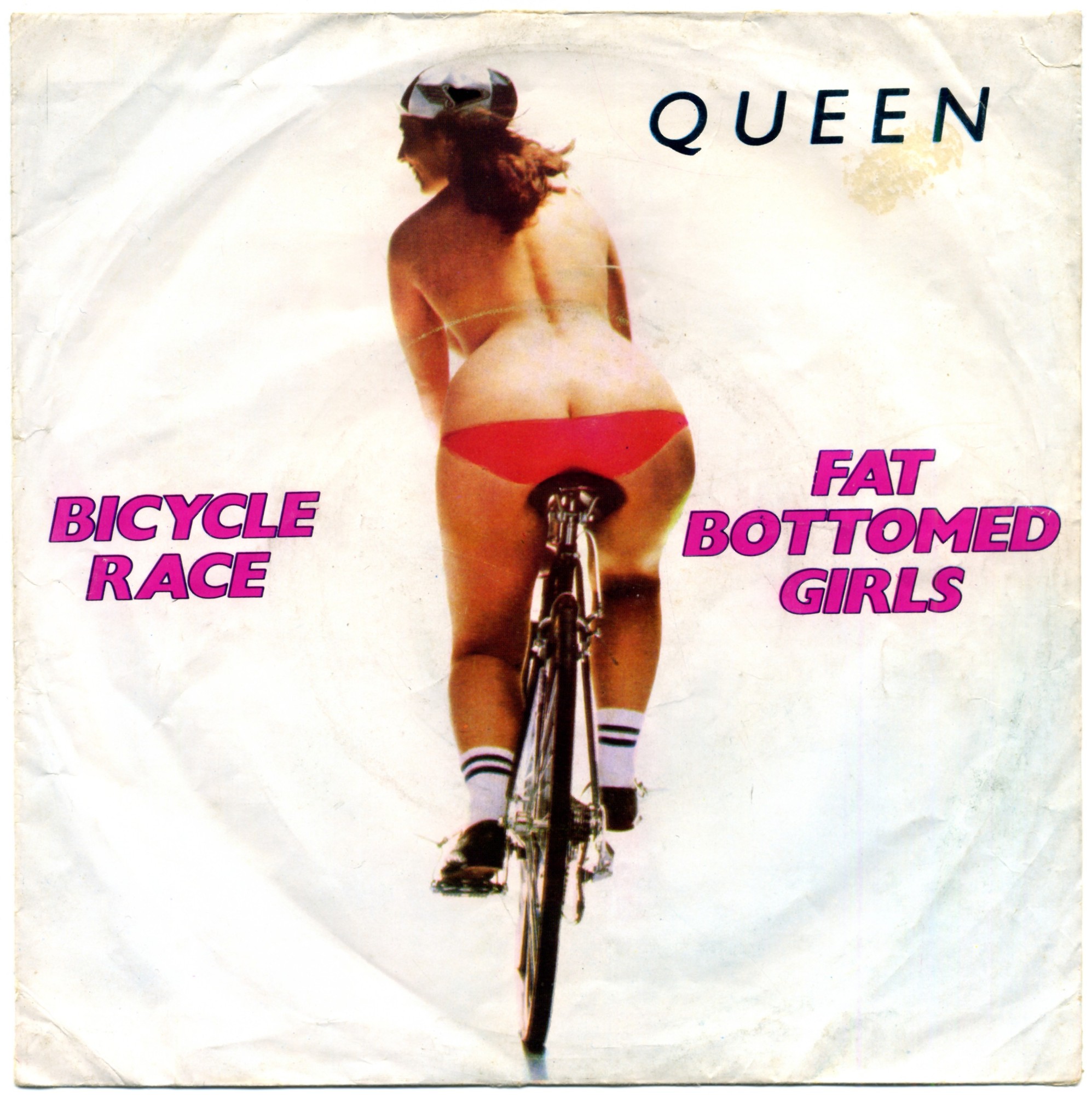

Again, for the Don’t Stop Me Now single the two editions (Figure 21 and Figure 22) share the same picture sleeve, an image taken during a live show from the “Live Killers” tour. The only difference can be found in the type of paper used, since the Portuguese one is thinner.


The single Crazy Little Thing Called Love, identical to the UK edition (Figure 24), has been published in two versions (Figure 23). The only difference amongst them is the colour of the word “Live” on the back referred to the B side, probably due to a different printing factory. The change of style of the group (hairstyle and clothes) denotes both a new musical language with less studio overdubs and a fashion update after the glam influences of the previous years.
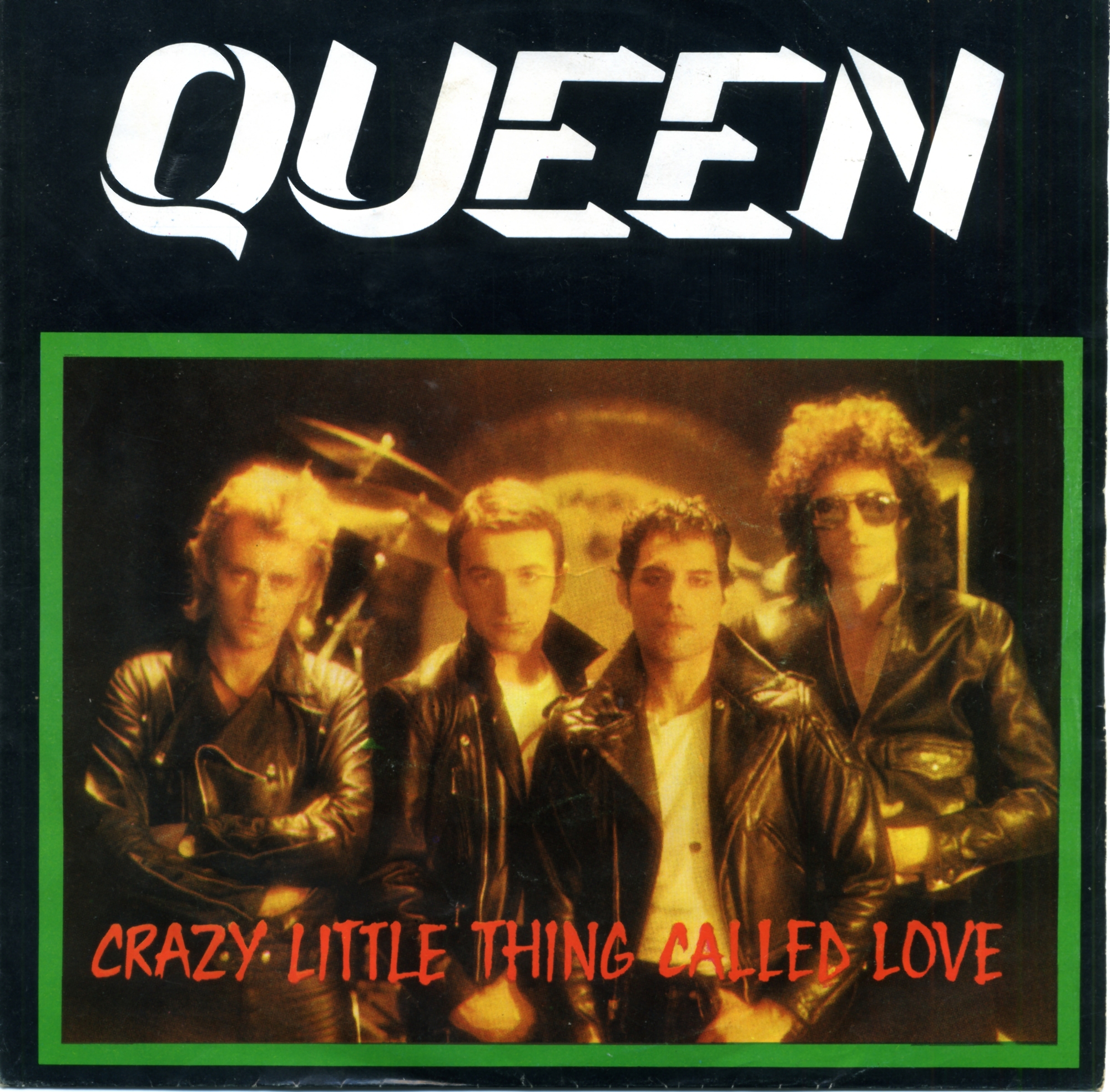
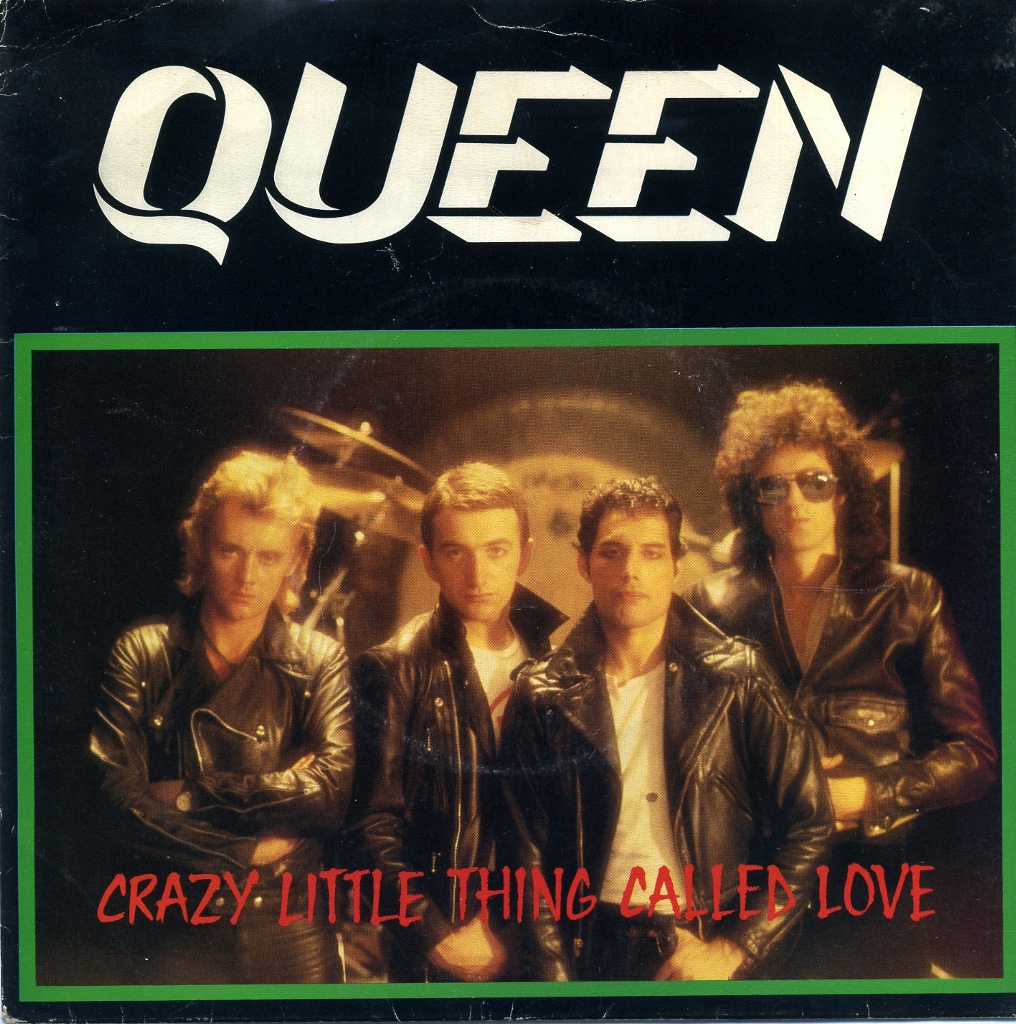
In 1980 the single Save Me has been published using a studio picture for the sleeves of both countries. The Portugal edition (Figure 25) differs from the standard UK (Figure 26) because the paper used was thinner and textured. The new Queen logo appears on the top in yellow.


The Portuguese picture sleeve for Another One Bites The Dust (Figure 27) is very interesting for several reasons: first of all its layout is totally different from the UK edition (Figure 28), and the only point in common is the name of the group printed with the same font.


Therefore, the picture sleeve has some interesting elements: the position of the four group components recalls a similar concept used in Portugal in the same year by the ABBA with the song The Winner Takes It All (Figure 29). But whilst the ABBA sleeve reflects order and symmetry (like group identity and audience target), the Queen one recalls more irreverence and freedom.

And there is more: each Queen component holds a sleeve in his hand with another member of the group pictured. This internal recursion recalls the famous PINK FLOYD sleeve for the LP “UMMAGUMMA” published in 1969 (Figure 30). The original image for the Queen picture sleeve – but without the recursion element – can be found on the inner sleeve of “THE GAME” LP.

The Play The Game single has the same picture sleeves both in Portugal (Figure 31) and UK (Figure 32) and it is taken from a studio session. The new look of the Queen members is clearly showed, and this recalls the new musical context with the use of the synthesizer from this album on.

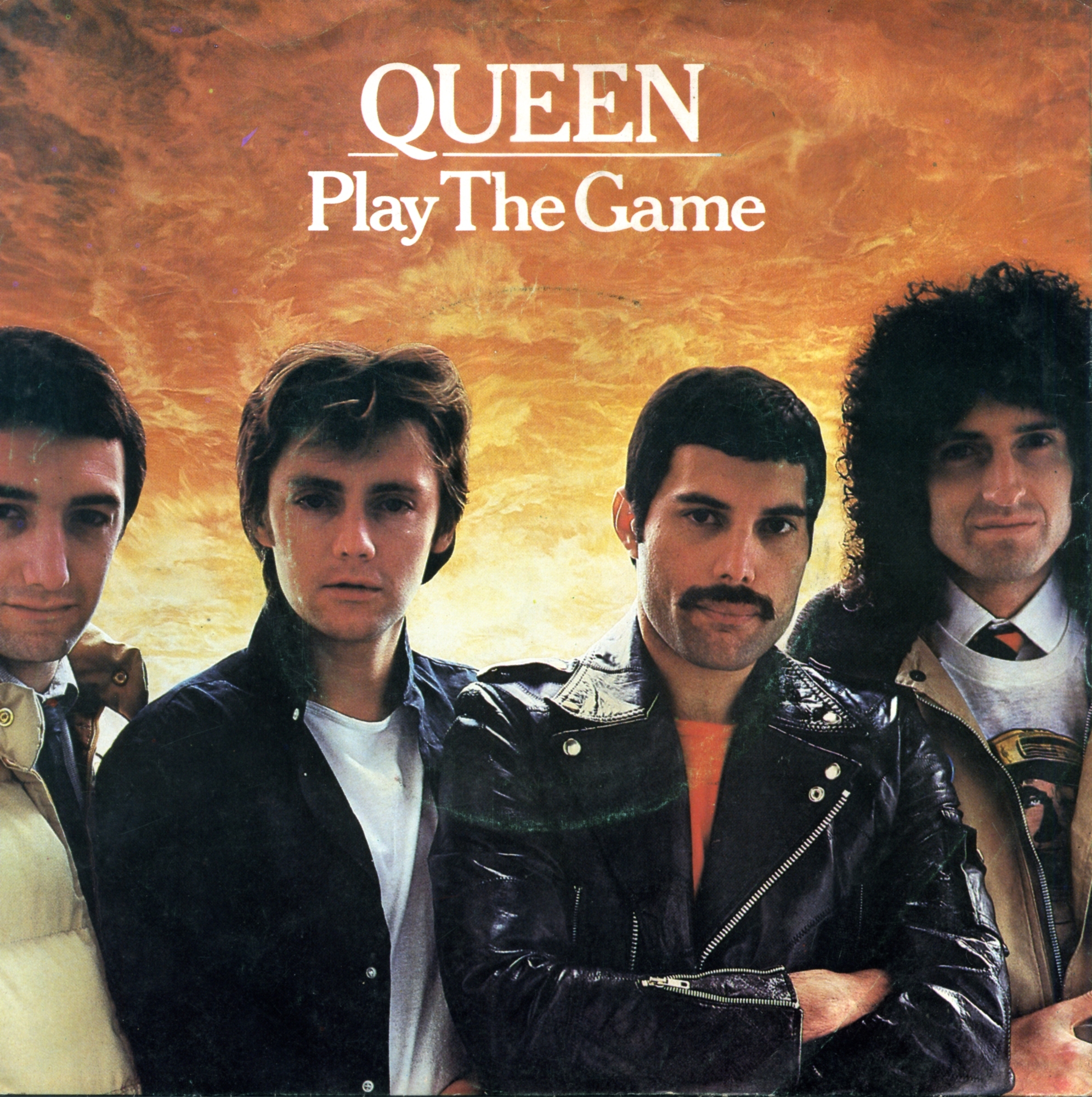
For the “Flash Gordon” original soundtrack Queen published the song Flash in 1980. The simple layout is identical in UK (Figure 34) and Portugal (Figure 33) and in many other countries where the lilac-blue colour is predominant. In Japanese and US editions yellow is instead the main colour and that recalls the original layout of the LP from which the songs are taken.


A simple and plain black layout is used to promote the Under Pressure single in 1981, in collaboration with David Bowie. The UK (Figure 36) and Portugal editions (Figure 35) have the same picture sleeve and track list. It is one of the simpler picture sleeves in Queen discography.
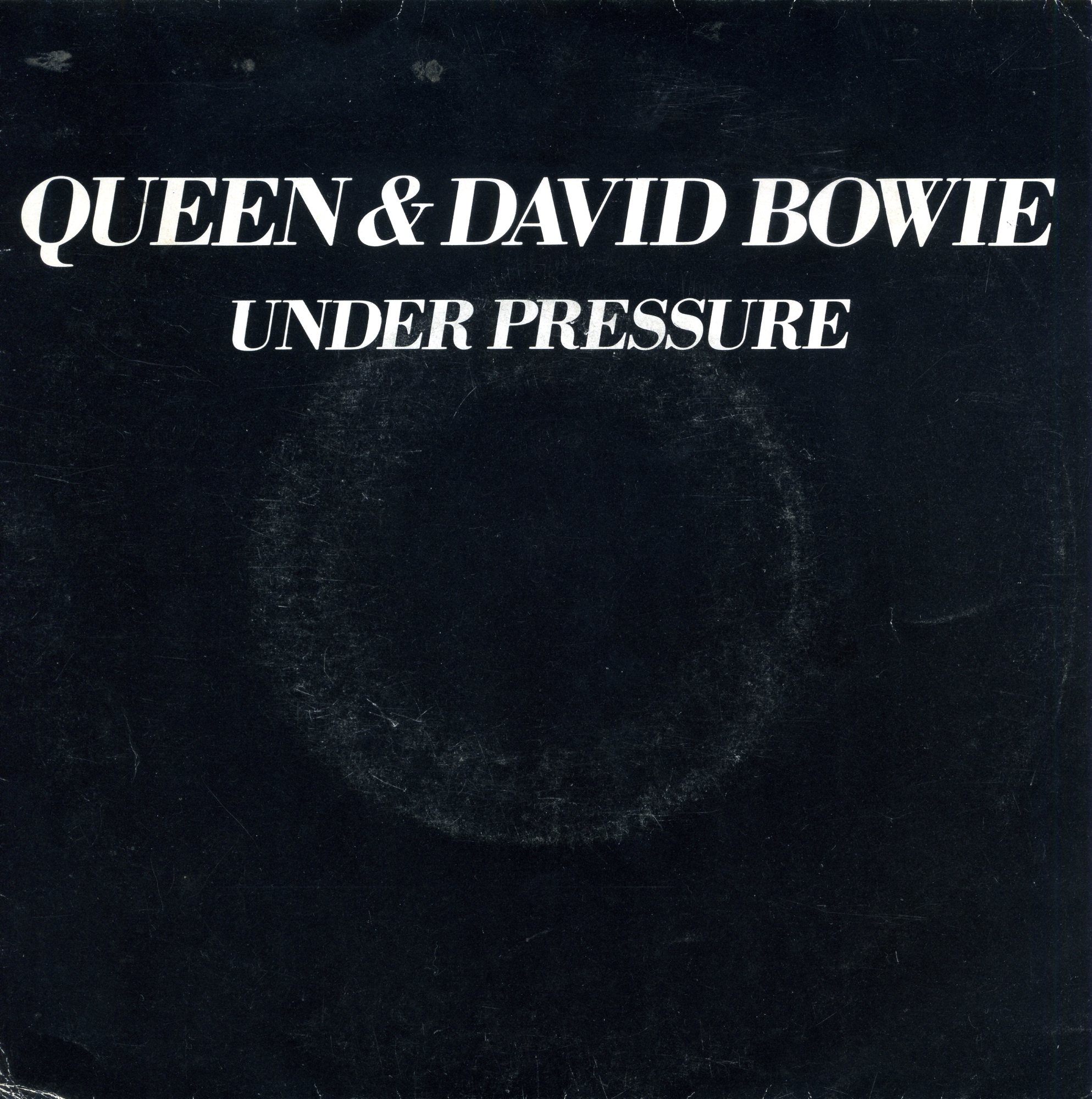
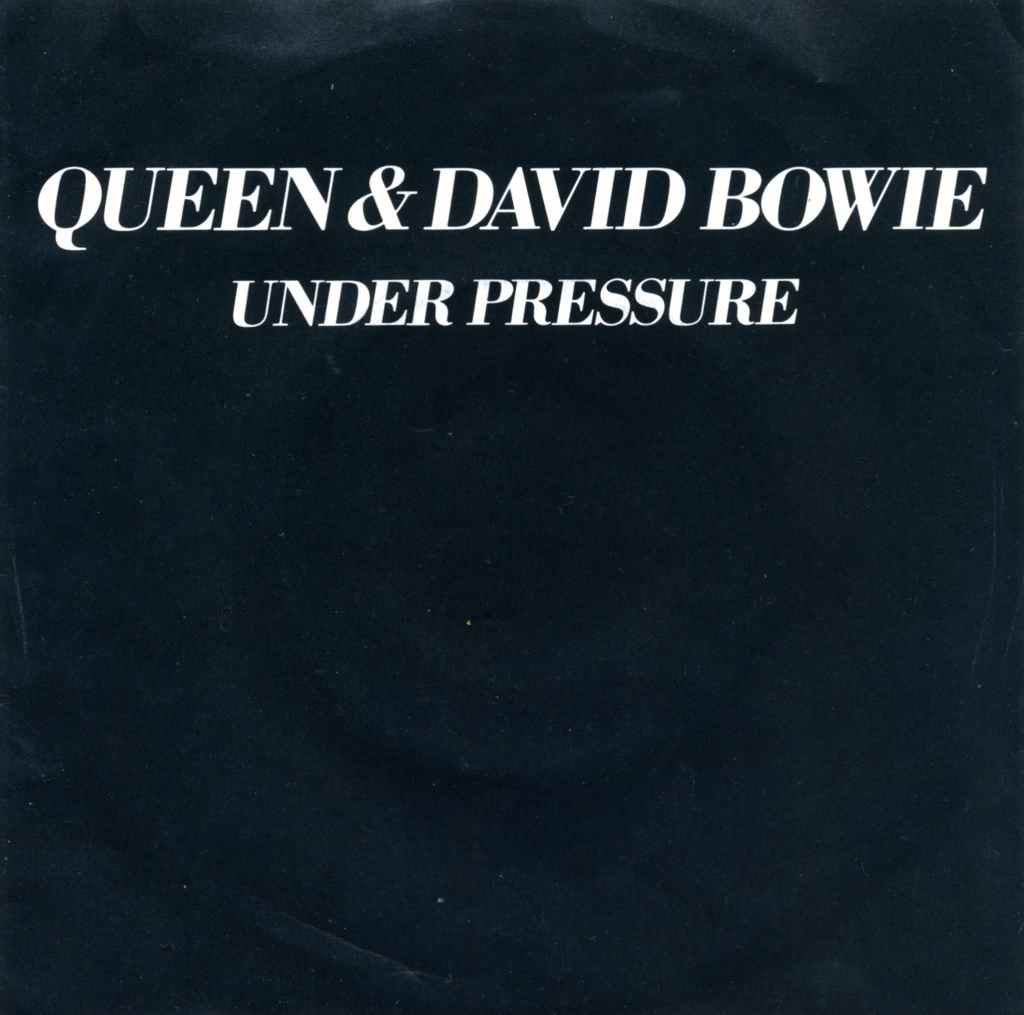
Two naked bodies are on the front cover of the single Body Language published in 1982. This cover has been censored in some countries, but Portugal (Figure 37) and UK (Figure 38) share the same concept. It is important to underline that the title of the song is missing, since the picture sleeve itself becomes the title with its clear sexual message. The arrows on the bodies of the models will be used again later in Freddie Mercury’s clothes during live shows.

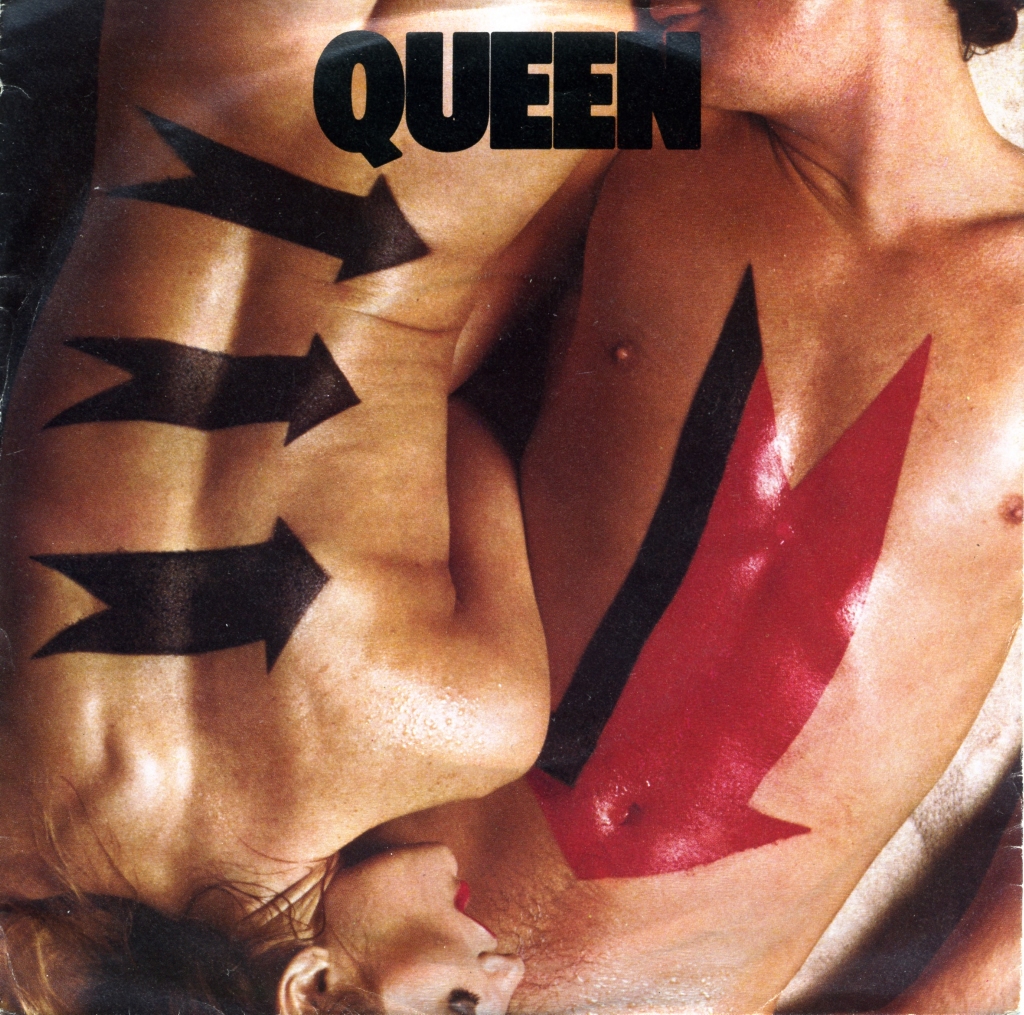
From 1984 on, with the publication of the Radio Ga Ga single, the record company EMI decided that almost all countries in the world should use the same picture sleeve in order to save money and to give a coherent image of the group. In this example Portugal (Figure 39) and UK (Figure 40) share the same picture sleeve with a picture of the band from a studio session with a new logo.


The I Want To Break Free single was published in UK and USA in several editions (Figure 42), one picture sleeve for each member of the group with the images taken from “THE WORKS” LP. But in Portugal (Figure 41) only Roger Taylor version was used, probably because in that years he was the most famous member in that country or in order to have less complexity in the market.


The video for the song It’s A Hard Life was a baroque masterpiece: the cover for the single captures this “operatic-style” feeling in an essential picture where it’s possible to examine all the details of the pompous costumes. The single’s cover features an unusual “skull and bones”-themed guitar too. The Portuguese edition (Figure 43) is identical to the UK one (Figure 44) in every detail.

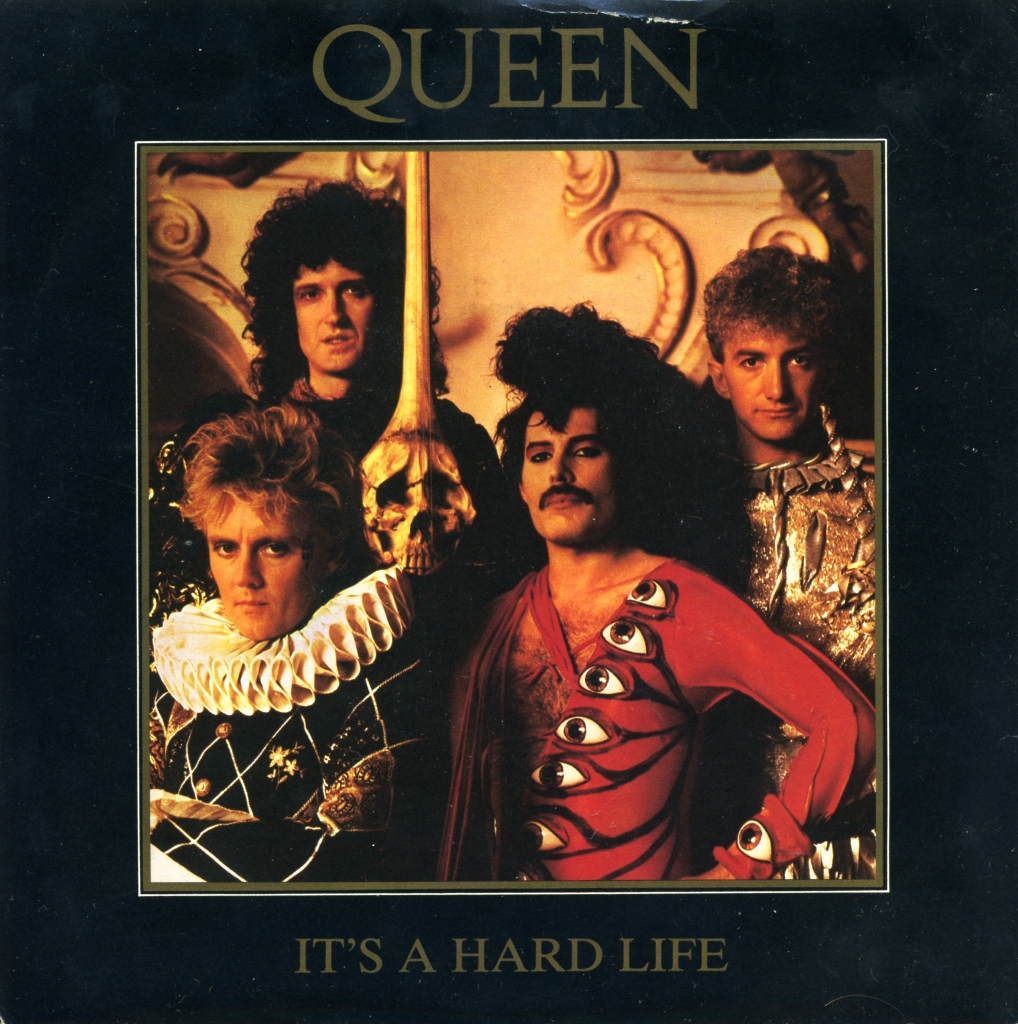
Thank God It’s Christmas is a song written by guitarist May and drummer Taylor. Released on 26 November 1984, the picture sleeve shows a picture collage from the 1984 tour. The UK edition (Figure 46) was used as a model for all the other releases including Portugal (Figure 45).


The single One Vision features a picture sleeve cover where the members of the band are photographed during the photo session for the Live Aid concert in 1985. Portuguese edition (Figure 47) is once again identical to the UK standard edition (Figure 48). The Queen logo is printed in red at the top of the picture cover.

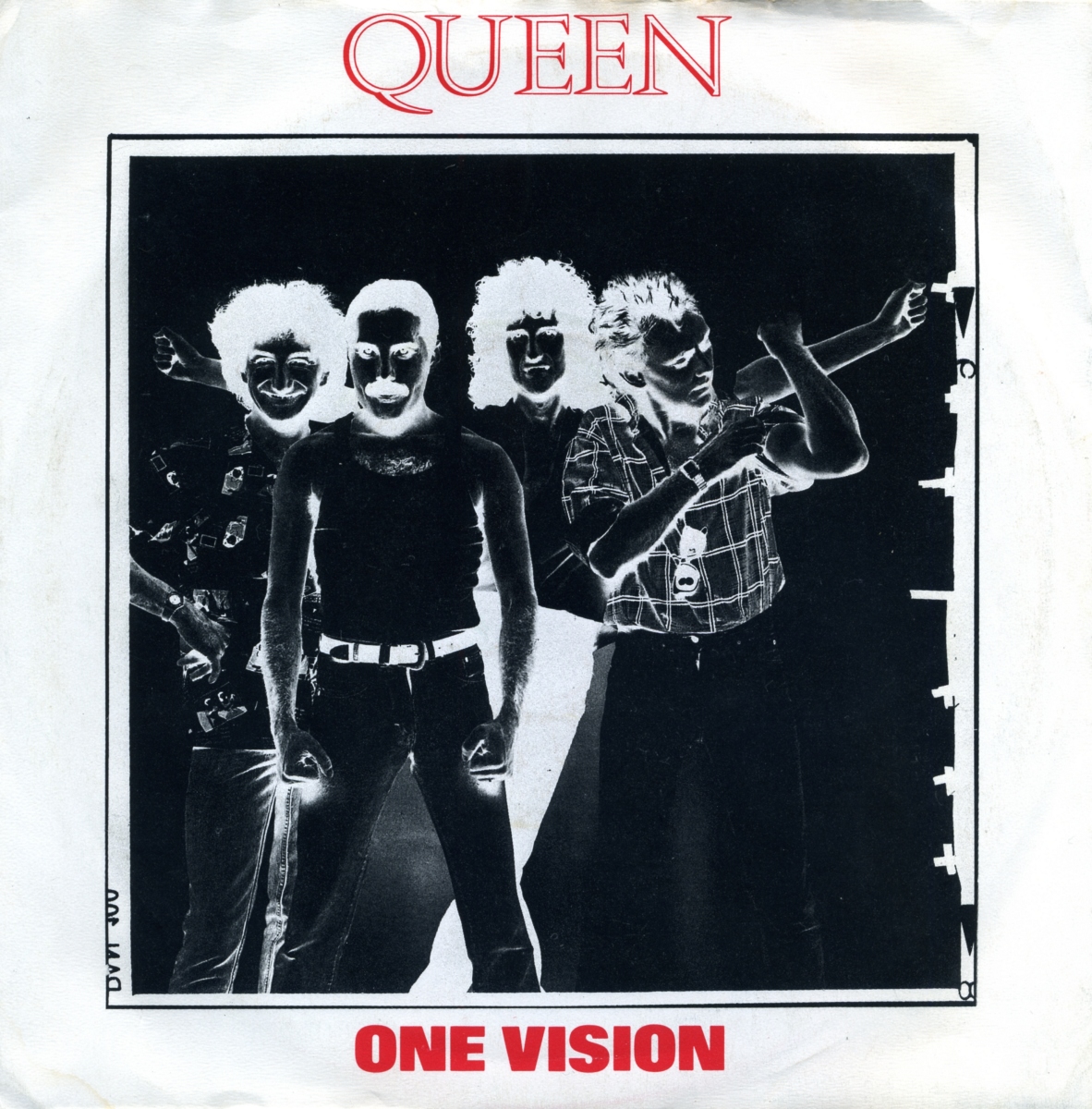
A picture taken during the Friends Will Be Friends video shoot is used for the picture sleeve of the vinyl cover. The UK edition (Figure 50) was used as a standard layout model for all other editions including the Portuguese one (Figure 49). The Queen logo changes again and this version will be used until 1989, when it will be redesigned for “THE MIRACLE” LP.
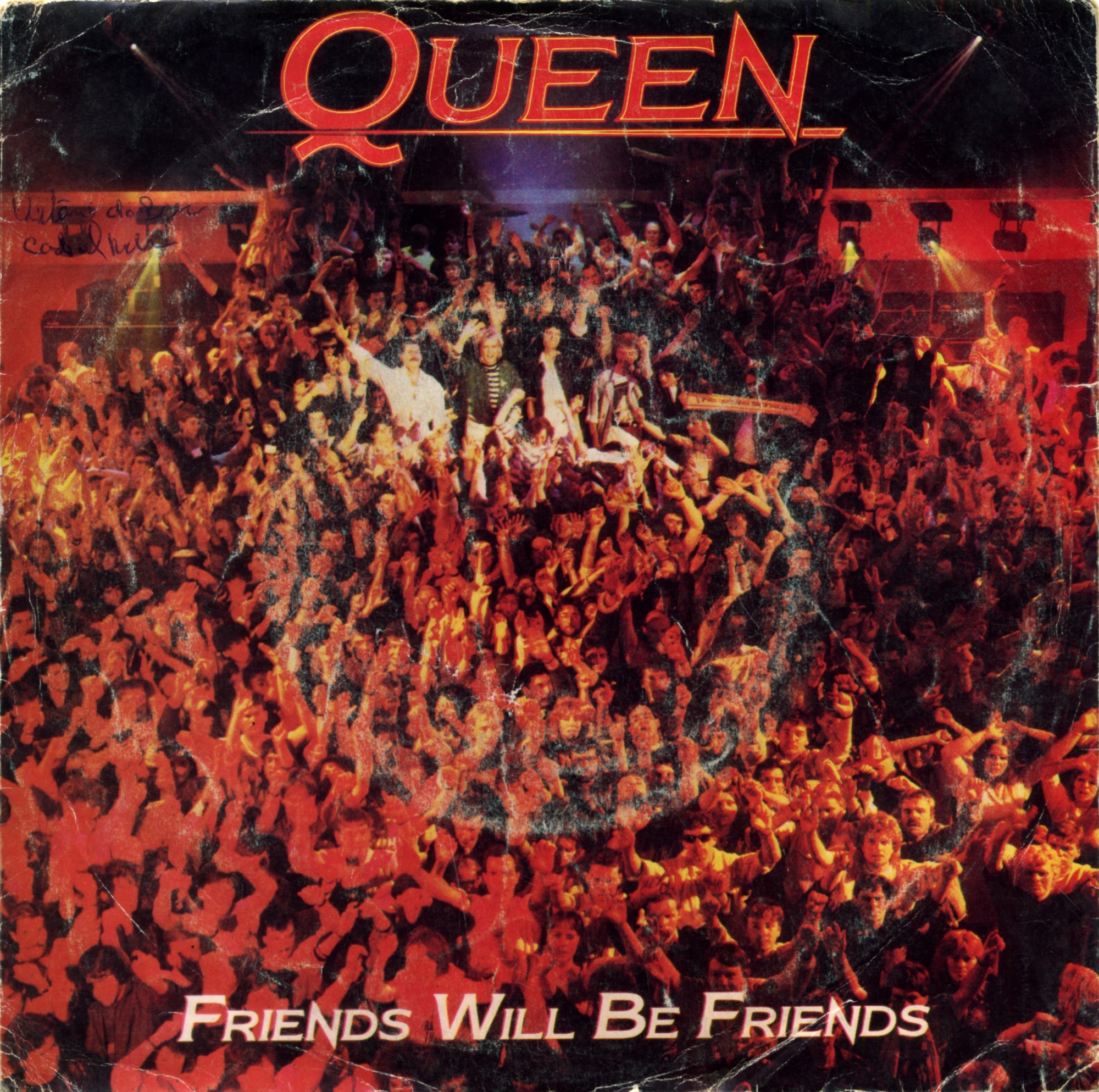

The second original soundtrack written by Queen was for the movie “Highlander” in 1986. The cover of the single A Kind Of Magic portrays one of the main character of the movie, the villain Kurgan, played by Clancy Brown. The Portuguese edition (Figure 51) is as identical to the UK one (but in France there is a variation with the actor Christopher Lambert) (Figure 52).

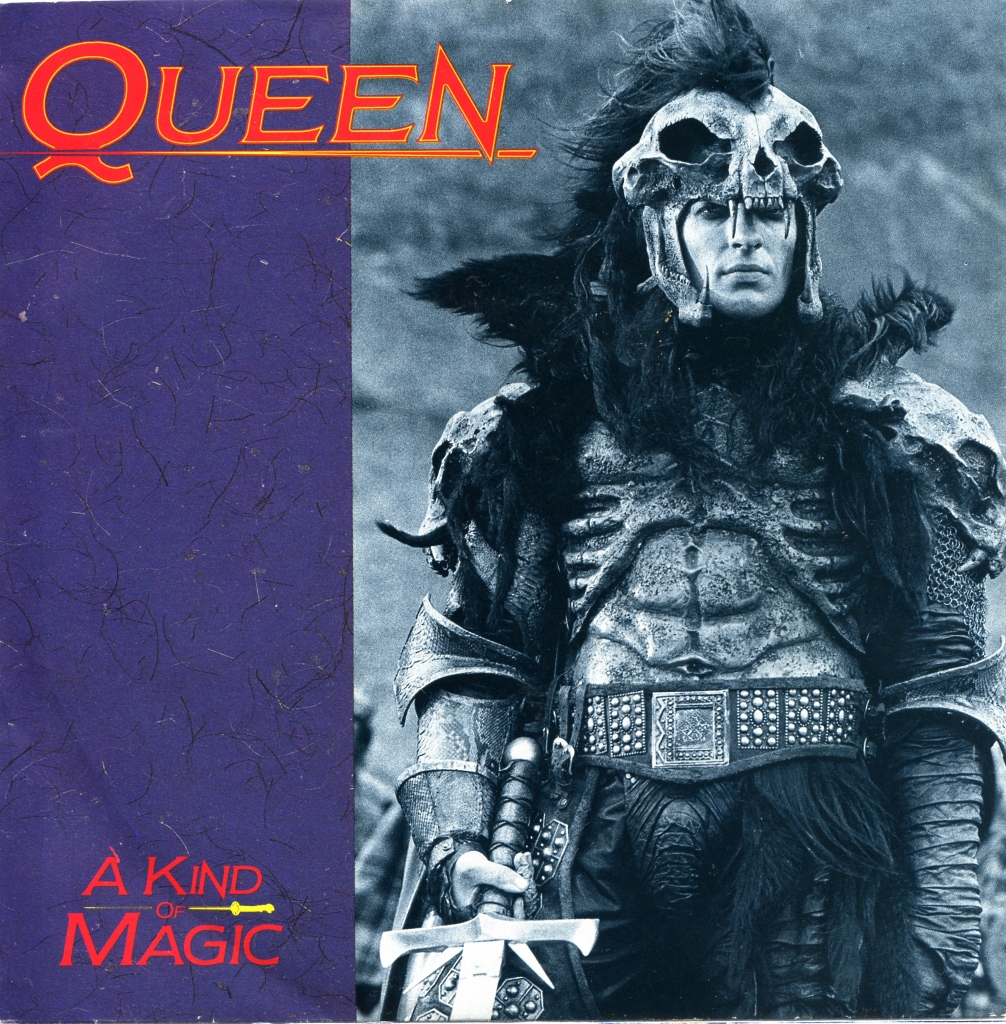
I Want It All, a single published in 1989 and taken from the LP “THE MIRACLE”, has a simple picture cover with all the members of the group dressed in black on a white background: the image recalls the rediscovered cooperation and inspiration inside the group. The new Queen logo appears on the top. Portugal edition (Figure 53) is identical to the UK one (Figure 54).


The Breakthru single features on the cover the details of the eyes taken directly from the album “THE MIRACLE”. The standard UK cover (Figure 56) has been the model for the Portuguese edition too (Figure 55). This has been the last 7” vinyl single published in Portugal, since no songs were chosen for this format for the following album “INNUENDO” in 1991. This was determined by the rise of the CD as a new format and the consequent abandonment of vinyl as a means of sound diffusion and promotion.
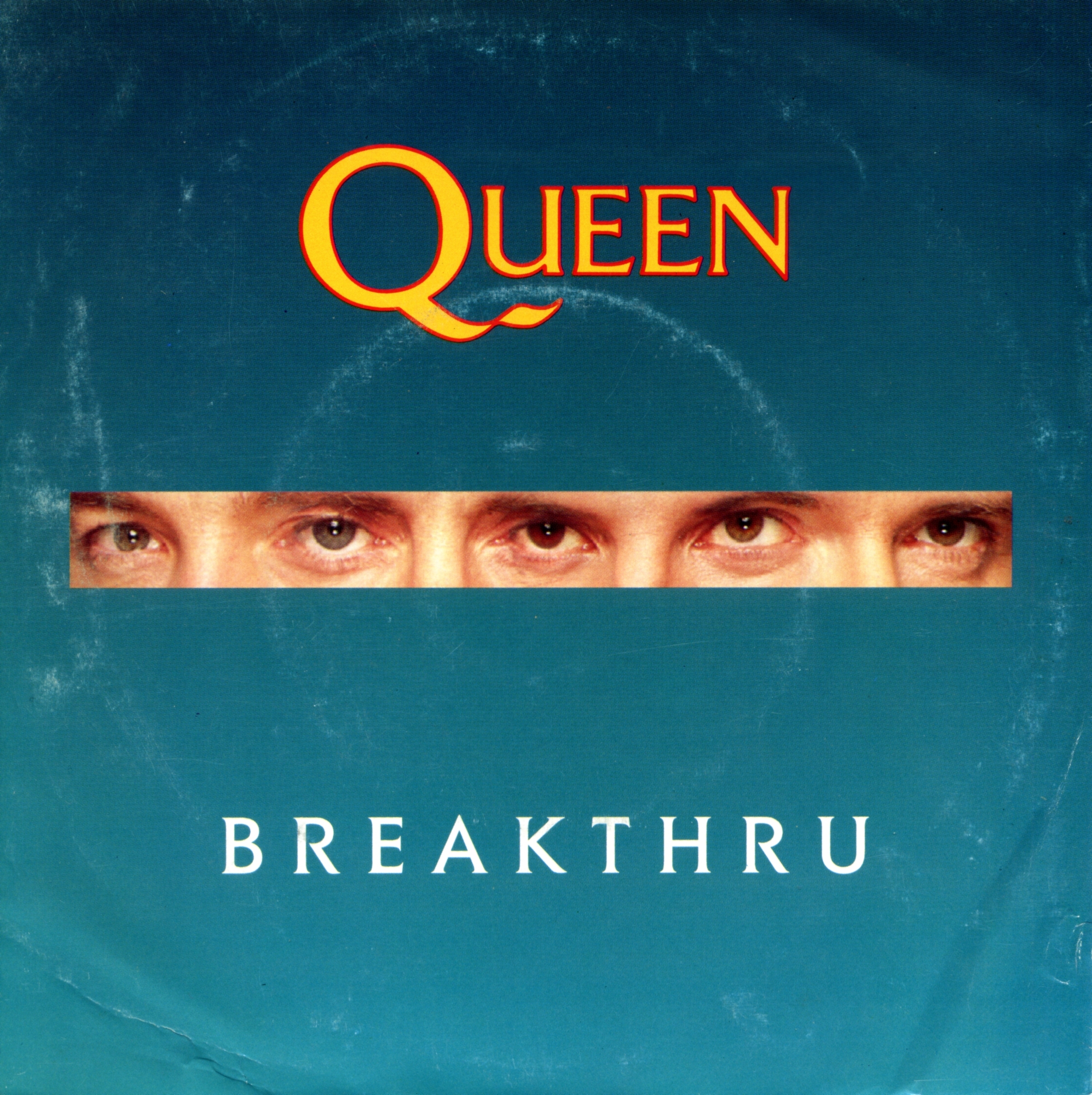

The several singles published in Portugal (and Angola) are really important, as it has been shown, from an iconographic point of view since these picture sleeves were not only intended as a marketing tool, but they were first of all conceived following different approaches: some of these were artistic and some of them shaped from other media (as videoclip), but always original.
© Nicola Bizzo
Related Articles
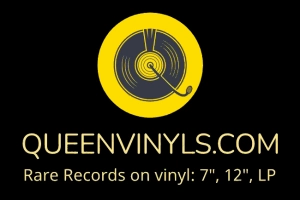

You must be logged in to post a comment.